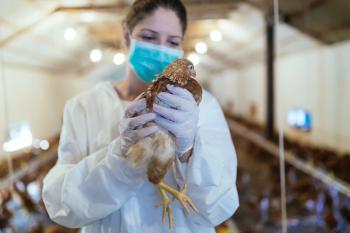
Household Transmission of Influenza Increased in 2021-2022 Vs Past Seasons
Though more research is needed to determine reasons for the association, a study published in JAMA Network revealed the 2021-2022 influenza season was associated with a significantly higher household transmission risk compared to pre-pandemic seasons.
This
Household risk of influenza A (H3N2) transmission was significantly increased during the 2021 to 2022 influenza season compared to seasons before the COVID-19 pandemic, according to a study published in JAMA Network.
With declining global numbers during the COVID-19 pandemic, a loss of natural immunity from lower infections could have contributed to the increased susceptibility of influenza infection from 2021 to 2022.
Study investigators aimed to compare the risk of virus infection in this season with those prior to the pandemic with a prospective study that enrolled households in 2 states before the pandemic (2017-2020) and 4 states during the 2021 to 2022 influenza season.
A pair of case-ascertained household transmission studies for influenza were conducted in the United States, with the 2017 to 2020 study held in Tennessee and Wisconsin and the second (2021-2022) held in New York, Arizona, North Carolina, and Tennessee, respectively.
People with laboratory-confirmed influenza virus infection were recruited from emergency departments, ambulatory clinics, or other settings that performed testing. Those with index cases with acute illness of less than 5 days duration who lived with at least 1 person who was not ill were eligible for the study, according to the investigators.
Individuals with index cases and their household contacts were enrolled within 7 days of illness onset and followed up for 5 days in Wisconsin (2017-2020) 7 days in Tennessee (2017-2020), or 10 days at all sites during the 2021 to 2022 season. Current analysis was restricted to no longer than a 7-day follow-up.
Individuals who were infected with influenza or who were household contacts in the pre-pandemic and 2021-2022 seasons were similar regarding age, sex, and household size.
Racial and ethnic groups differed significantly between periods (P < .001) and vaccination for influenza was significantly lower for people who were household contacts in the 2021-2022 season (P = .008).
Household contacts in the 2021 to 2022 season reported spending more time with the individual who had influenza infection, as 74% spent more than 4 hours with the infected individual in 2021-2022 compared to 56% during pre-pandemic seasons (P = .001).
Similarly, household contacts in the 2021 to 2022 season reported more physical contact with the infected individual compared to pre-pandemic seasons (82% vs 62%, respectively [P < .001]).
There were 152 individuals with influenza infection (median age, 13 years; 3.9% Black; 52.0% female) and 353 household contacts (median age, 33 years; 2.8% Black; 54.1% female) included during the pre-pandemic seasons.
In the 2021-2022 season, the analysis included 84 individuals with influenza infection (median age, 10 years; 13.1% Black; 52.4% female) and 186 household contacts (median age, 28.5 years; 14.0% Black; 63.4% female).
According to results, 71 of 353 household contacts (20.1%) were infected with influenza A during the prepandemic influenza seasons compared to 93 of 186 household contacts (50.0%) in 2021-2022.
Compared to pre-pandemic seasons, the adjusted relative risk of influenza A virus infection for 2021 to 2022 was 2.31 (95% CI, 1.86-2.86).
In a prospective study among cohorts in 5 US states, the investigators concluded, “there was a significantly increased risk of household transmission of influenza A(H3N2) in 2021-2022 compared with pre-pandemic seasons.”
They noted more research is needed to understand reasoning for the increased risk from 2021-2022.
Reference:
Rolfes MA, Talbot HK, McLean HQ, et al. Household transmission of influenza A viruses in 2021-2022. JAMA. 2023;329(6):482–489. doi:10.1001/jama.2023.0064
Newsletter
Stay ahead of emerging infectious disease threats with expert insights and breaking research. Subscribe now to get updates delivered straight to your inbox.



















































































































































































































































































